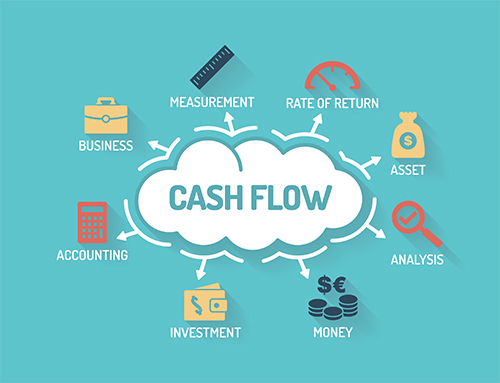Cash is the lifeblood of any business, large or small. And for smaller businesses, it’s even more critical to have cash in the bank not only to cover immediate expenses, such as payroll and expenses, and fixed expenses like rent and utilities, but also emergencies. Cash is king, but maintaining positive cash flow can be a challenge for any operation.
There are simple things you can do, such as strategies to speed inflow of accounts receivables. Some customers won’t worry about paying you on time and will leave you hanging for 60, 90, or 120 days. You can make it clear in your contract that prompt payment is expected, and late payment will incur a penalty. You also can take steps to cut your costs to improve your cash position. However, these are basic steps. There is more that you can do if you are strategic in your approach to cash:
1. Understand what drives your expenses and profits
You need to have a firm handle on your P&L to develop strategies to build your business quickly and offset the outflow of cash. Know what your costs are, what you should charge, and where your break even point is.
For example, some small businesses try to attract new customers and business with coupons and discounts to increase cash flow. This can be a real mistake. Consider the case of Seattle coffee shop Posies who used Groupon to offer a $13 promotion coffee promotion for $6. The deal was too good to pass up, and over 1,000 customers cashed in the coupon. The idea was customers would use the coupon in addition to other purchases, but it didn’t work that way and resulted in a disastrous loss for the coffee shop. Posies was collecting $3 for a $13 retail item, and after giving Groupon their split they were in the red. If you try to sell something for less than it costs you, you will never make it up on volume, and any new customers won’t offset the negative cash flow.
2. Bundle products and services
You don’t have to discount if you can add value. If you can create bundles that don’t incur immediate costs to your business but increase its perceived value, you can charge more and improve your cash flow.
For example, consider the maintenance agreements that many car manufacturers are offering. They allay consumer fears and offer real value to customers by selling repair insurance, gambling that the car won’t need major repairs in the future, but at minimal risk to the dealer. The customers like the convenience of free car repairs (even though they are prepaid), and it puts additional cash the dealers’ pockets. Find ways to improve the value of your products without adding costs.
3. Create a value-added product or service
Find ways to build an up-sell service into your contracts so you get paid more for additional services or when things go awry. For example, the first so many hours of consulting work can be offered for a fixed price, but there is a premium price for additional hours. Or you can offer free setup or initial product installation, with additional fees for service later. The idea is to deliver a value-added service or materials for a pre-set price, then build in a premium for extras that may or may not be needed later. Your extra cash comes from the premium markup.
4. Create repeat business
If you don’t have to spend a lot of time and money attracting new customers, then you have more cash to run your business. That’s why repeat business is so important. Repeat customers ease cash flow. In retail, for example, repeat shoppers are gold, since you may not see profit from a customer until the fourth or fifth transaction. Try loyalty programs, VIP offers, frequent buyer programs, and other incentives to bring back customers and promote customer loyalty. Free goods and services can be useful if you make sure giveaways don’t affect profits, e.g. give away low-cost goods and services or loss-leaders.
5. Pre-sell and offer cash discounts
To encourage sales sooner, offer advance purchases options or discounts for cash payments. If you can convince a customer to purchase something they may need later and put down money now, then it puts the cash immediately in your pocket.
Maintaining positive cash flow can require some flexibility and creativity, but if you can find one or two techniques that can increase the amount of money flowing into your business, it could save you in tough times.


